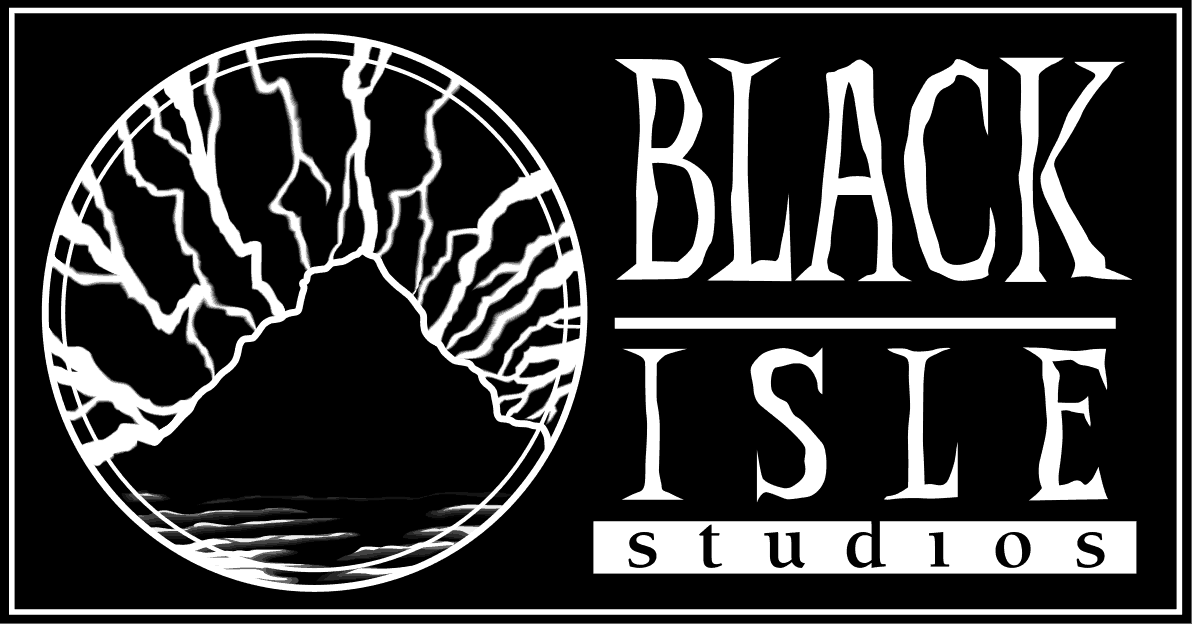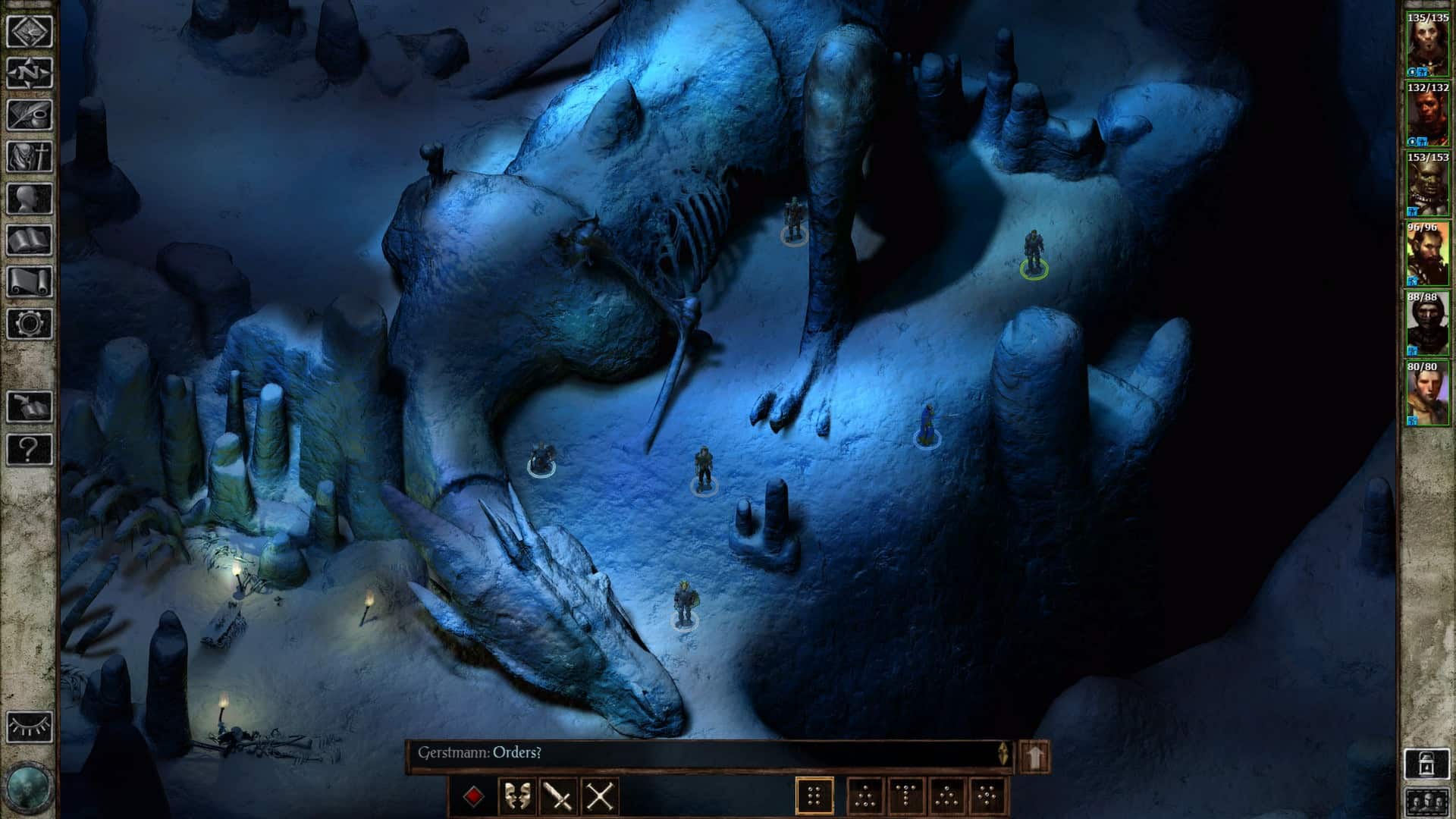It’s a relatively warm autumn night of 4th October 2017 A.D. here in Berlin and I am standing outside on the street in front of a local wine bar impatiently awaiting the arrival of one of my favorite game masters of the cRPG scene, Obsidian’s one and only Joshua Sawyer. Upon his arrival we sit down at a table in the intimate environment of a wine cellar and whilst he enjoys his glass of red, we are quick to find a common ground in history. He is very passionate and knowledgeable about the subject of medieval history and is also fluent in German. But before I hit the record button of my voice recorder and for the first time, so that conversation can switch to the games, we transit into a slightly more affordable establishment (due my typical lack of dineros) just down the street. During the short walk, we talk more on a subject of local history and I am learning about the forceful Germanization of Jewish names in the late 18th. Finally, at our destination we find a quieter compartment at the rear end of the bar and with a mixture of excitement and nervousness, my index finger slowly proceeds to that magical red button…
Hi Josh, do you still remember your very first Fallout experience?
I was a junior in college when it came out and I played it and fell in love with it immediately. After finishing I went online and read about the endings. Someone was talking about the evil ending, which I did not know existed. So I went back, reloaded my save game, and killed everyone I could find to get negative karma, so that I could get the evil ending. And then I started the game again—I think I played it throughout like three times that week.
How did you manage to join the ranks of Interplay & Black Isle?
So I was graduating college with a degree in history and a minor in theater. I had a very low grade point average—I was a bad student. I had no idea what I was going to do with those degrees. At the time, I was actually expecting to become an apprentice for a tattoo parlor. Then a friend of mine told me that a studio in California, Black Isle, was hiring a web designer for a new D&D game they were making. I had taught myself web design—it was the mid-’90s, so I taught myself HTML, Photoshop and Flash. At that time there were only a few people who knew Flash. So I applied for a job at Black Isle Studios for a project that they hadn’t announced what it was. I was one of three people out of 60 something who were considered. I was actually the second choice—the first choice wanted to be with his girlfriend, so he ended up taking a job in Seattle [laughing].
But then someone from the Icewind Dale team left and there was an opening
So that’s how I got into Interplay. I started to work as a web designer for Planescape: Torment—that was my first project. And from there, I worked on the Icewind Dale website, redesigned the Baldur’s Gate 2 and eventually the Neverwinter Nights 2 websites. But at the same time, I was talking a lot with Feargus Urquhart [ex-boss of Black Isle, current CEO of Obsidian], Chris Avellone, Colin McComb, Tim Donely and others who worked on Planescape, trying to convince them to let me do the game design.
Had a vacancy opened for that position?
There wasn’t a position at first. I think it was Colin McComb—who used to work for TSR’s D&D stuff—who recognized that I knew D&D very thoroughly. But then someone from the Icewind Dale team left and there was an opening, so Feargus let me come over part-time. I was originally working half-time on websites and half-time on Icewind Dale and eventually I moved onto full-time development.
What was the transition to full-time game designer like?
I think it was me telling Chris Parker [former chief producer at Interplay, now works at Obsidian] that I couldn’t do it anymore [laughing]. I was like, “Hey man, I’ve got a lot of areas to design. There are other people who can do the web work, I am not that important to it.” I had already redesigned the Icewind Dale and Baldurs Gate 1 and 2 websites. I said, “I think this is more important.” Because web was part of marketing, I was getting dragged into marketing meetings. I was in this conflict like, “aahh, it is lot of my time,” so eventually, they agreed and I shifted over. I still helped them partially with the web design, but I was now a full-time game designer.

You are known to be a passionate lover and expert of D&D. Was that the driving force behind your game design ambition?
Yeah. I thought, maybe, if I was going to get into games, it would be tabletop games. I figured I would want to be designing tabletop role play games, cause I already did this in a college—just my own games for myself and my friends. I didn’t really have any idea how to get into video games, so it was really just luck—all of this is just luck.
I started with the basic level, followed by expert D&D and then AD&D. And AD&D was about the time when I met this older kid in my local library, Tony Uñate. He was playing The Bard’s Tale—the first one—and that was my first exposure to computer RPGs. That just blew me away. It was on a C64.
And do you remember when that was?
That was 1985. That was the year it came out, so yeah, I was just blown away by that. I got really into that and Ultima III was around at the same time I think. And Wizardry. My friend Ryan had that, Might and Magic and bunch of other games. So after that, I’ve just continuously played computer and tabletop RPGs.
Fallout was originally called something like Vault 13. I don’t what the reason was, but Brian Fargo said, “Call it Fallout!”
Did you play the original Wasteland?
Actually, I did not play Wasteland. I played The Bard’s Tale and I think Dragon Wars, and a bunch of other Interplay games, but not Wasteland at that time.
Could you tell me about your very first meeting with Brian Fargo?
My first meeting with him was at Interplay, but I don’t remember the context of the meeting and I am sure he does not remember it at all, because at the time, I was just a junior designer. But actually, I remember the first email contact I had with him, which was great! Actually, there were two things that were really fantastic. He sent Feargus an email about how much he loved Icewind Dale, and I was like ‘wow, that is pretty awesome.’ As someone who grew up loving The Bard’s Tale, that was incredible.
And then there was another time when we had to come up with the names for the expansion of Icewind Dale and there was a big list. One of them was The Tales of the Frozen North—and, you know, I bet marketing was going to pick up that one, because it sounded like Tales of the Sword Coast [Baldur’s Gate expansion]. But I had one hit on the list that was called Heart of Winter and there were around eight others, and I was like, ‘that is the one they should pick!’
So I sent this email to Interplay’s marketing team, including Brian Fargo. I didn’t say to them what my preferences were; I just presented them with the team’s ideas for the names of the expansion. And before anyone else could respond, Brian Fargo responded, “Heart of Winter!” [laughing]. I was like, ‘great, awesome, I guess it really does not matter what everyone else said, because he just picked it.’
There is a funny story which Tim tells too, Tim Cain, which is that Fallout was originally called something like Vault 13. I don’t what the reason was, but Brian Fargo said, “Call it Fallout!” Tim, to his credit, says that at the time he hated the name and lot of people thought it was a really stupid name, but apparently everyone thought that it’s cool in the end, so it didn’t matter.
we also balanced the combat a little more aggressively, because we can predict what kind of level you are going to be pretty easily based upon the amount of combat in the game
Let’s return to Icewind Dale for a moment. Why was your approach so radically different to Baldur’s Gate?
We knew that making a Baldur’s Gate-sized game would be very difficult with the team we had. BG is huge—very long with a ton of maps. We did not have that many artists and designers to work on it. So Chris Parker—who was our producer at the time and now one of the co-owners of Obsidian—he said, “Okay, let’s focus this as a linear dungeon crawler. Instead of having a huge world to explore and lots and lots of quests, we’ll have a straight, linear, combat-oriented game.”
So we really focused on making lots of cool dungeon environments rather than city environments that we knew would take a lot of time and effort. There was also the fact that we did not use companions, which again would have been a huge amount of work. We said, “let’s just let players make their whole party,” which is something many people did in Baldur’s Gate anyway. So you just make your whole party, and make lots of voice acting and portraits for people, so that they have a huge number of things to pick from. And yeah that was really our focus.

So what was the main difference in Icewind Dale‘s combat mechanics?
In comparison with Baldur’s Gate 1, I think that we had more of an emphasis on tactical combat encounters that used the whole party, because we assumed that from the beginning you would have a full party of adventurers and you could cover all the bases. Because the game was linear, we also balanced the combat a little more aggressively, because we can predict what kind of level you are going to be pretty easily based upon the amount of combat in the game. And because the level cap bumped up from BG1, we also extended also the types of magic items we had—the range of spells and stuff like that.